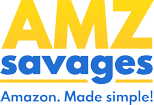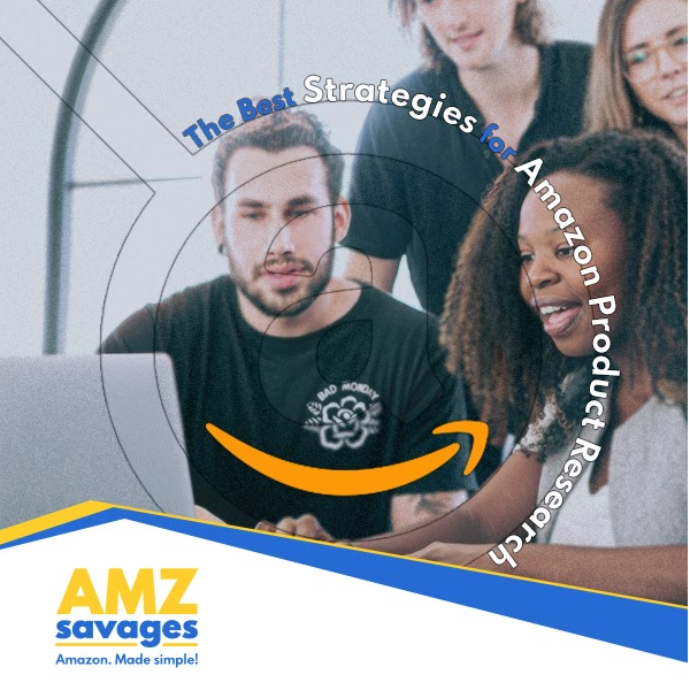If you’ve ever seen the 1967 film The Graduate, you probably recall the iconic scene at the end when the newly-married couple drive away and Dustin Hoffman’s face falls as if he was suddenly hit with a dose of reality.
As we move into 2022, the classic movie is a distant memory (if a memory at all) to many of us. But the lesson with acting on emotion and not rational still rings true and is a good lesson to everyone, particularly Amazon sellers.
All too often, new or potential sellers become giddy with the idea of being an entrepreneur and making quick money on the conglomerate that is Amazon. And while such prospects certainly are enticing, it’s pretty important that merchants make selling decisions based on metrics and data, not emotions. This isn’t to suggest that you shouldn’t be passionate about the product you are merchandising. Passion is an important factor in the success of your brand. However, if you haven’t done proper product research, that product you thought was such a good idea may not end up transitioning to a profitable product on Amazon. All too often, we see sellers with the same exact look on Hoffman’s face – that “Oh s***” face when they realize that expectation and reality didn’t quite align.

Selling on Amazon has evolved over the last decade and it continues to evolve as more sellers enter the market in tandem with self-proclaimed “experts” that seem to be created out of thin air.
Aside from the conundrum of finding a high-selling product is the problem with budgeting for your business. Even if you find a great product and have the metrics to buttress your business endeavor, you still need to come up with the capital to start your Amazon venture. As this article explains, when it comes to initially investing in your company, you need to properly budget for all potential costs including PPC and other marketing strategies. Copious amounts of eager entrepreneurs on Amazon forums inquire about the minimum expected budget to launch their first product only to be met with a barrage of answers. Some swear by the doability of establishing an Amazon brand with only $5,000 (a number upended in recent years as Amazon’s marketplace has become exceedingly competitive and marketing costs have skyrocketed). Other experts may quote a minimum of $25,000.
Essentially, anytime there is such a drastic difference, you can go ahead and assume that no one has a damn clue what they are talking about. Or they are basing their conclusions on anecdotal stories. There are a few factors that experts and other sellers judge their recommended capital on, obscuring facts regarding what price point you really should be investing. For example, an established seller who is confident of their material and shipping supply chains and has a history of strong sales and ranking can order $6,000 worth of units, get them into the FBA warehouse quickly, and ultimately turn that investment into a cash cow. This quick turnaround allows the seller to go back to the manufacturer and get another round of units. But that doesn’t mean that newcomers only need to have $6,000 for a start-up.
On the other hand, ordering $20,000 worth of products doesn’t make sense for a new business for a few reasons: 1) Amazon has restock limits that are based on your sales history which means newcomers don’t get the advantage that highly-coveted brands do and 2) Due to extensive shipping delays, your cash-flow is likely to be tied-up across seas for upward of months.
Let’s dive into product research and see if we can mitigate some of the risk, so that once your product is released, you feel confident in your investment.
What Do Most Amazon Sellers Use for Product Research?
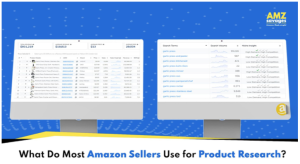
Tools like Helium 10 have done a solid job providing user-friendly tools people can use for a plethora of Amazon-centered services. And it’s wildly popular. Potential sellers of a product search Amazon and use their X-Ray extension to scrape the search results page as a means of product research.

Honestly, it returns some good information. Estimated units sold, Revenue, BSR (Best Sellers Rank), Reviews & Review velocity. It even gives the layout of the land in regards to the related keywords.
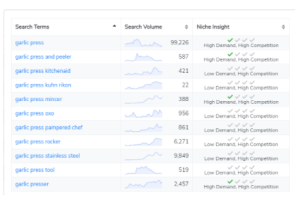
So what’s the drawback?
EVERYBODY uses it. A majority of sellers use it and a majority of VAs offering services to “hunt” for products are analyzing and drawing conclusions from the exact same data. And these are all the major metrics that seasoned VA’s and the average seller uses to discern what potential products will do well on Amazon. And there lies the problem.
Let’s say you are an eager entrepreneur that is utilizing X-Ray for your product research. You see an opportunity with a product that has, say, 10,000 search results with less than 1,000 sellers. You establish that the supply-and-demand for said product is good enough to turn profit. The problem is that, with roughly 2,000 new sellers on Amazon per day and the majority of them using Helium 10 for their product research, the likelihood of other people going after the exact same product is pretty high. By the time you have your product source, there is likely to be more than 1,000 other competitors. Hopefully, you can see how quickly this spider webs out and your quiet little niche quickly becomes overrun by everyone from major players to startup sellers.
How You Can Use PPC Results for Product Research
If you are at the point where you are in search of the perfect Amazon product, your consumption of Amazon content has probably led you to the understanding of how vital branding and PPC is to the success of your business. The great thing about branding is that you can tuck yourself away in a niche and cater to a specific audience. And if you are patient enough to learn PPC, you can go after keyword phrases and ad techniques that cater to your niche.
The benefits of managing your own PPC campaigns isn’t just that you can save money on outsourcing and learn a new skill set (albeit those are pretty cool bonuses); you can actually utilize your results to come up with new products that would be a great addition to your store or that you can sell with your current product in a bundle.
PPC returns data. The golden goose of data. First-party data. PPC results provide you the actual search term that customers search. But how can you turn this information into a winning second product?

There are different ways to go after this data. The most commonly suggested advertising campaign type are Automatic campaigns. An automatic campaign is the fastest campaign type to start running on Amazon. It harnesses the power of the algorithm (based on your product listing’s copy) to target keywords and products. It is comprised of 4 target groups: Close Match & Loose Match will target keywords while Compliments & Substitutes target products.
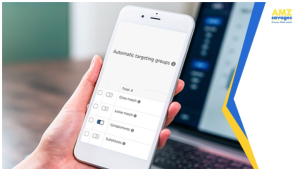
Over time, this type of campaign will produce customer-searched keyword phrases and also ASINs that your product has been advertised on.
There are also Manual Campaigns. If you know specific keywords to bid on then you can create different ad groups. Normally, people will create broad match, phrase match, and exact match ad groups that you can run. While we won’t go into the details of all of the different match types you can create, we will focus on broad campaigns and how they can pertain to product research.
With broad campaigns, Amazon will take your keyword and allow that keyword to be bid in any order. Amazon will add words before, after, or before and after your keyword. So for example, if you are bidding on the keyword term “women shoes”, Amazon may allow your product to be bid in different ways such as:
- shoes women
- shoes for women
- black leather shoes women
- Women shoes black leather
PPC experts know that these longtail keywords are the holy grail for the most efficient PPC spend, but not all long tail keywords work to your benefit. In the example above, if you were selling a red leather women’s shoe and didn’t offer black and you had a significantly high CTR on “black leather shoes women” with no conversions, this data might tell you that a lot of people are searching for your shoes but in a different color. Suddenly, you can expand your storefront by offering a new shoe color that has data to back up the popularity.
Conversely, if the campaign began to generate black leather ballerina flat shoes, then you have a new style to begin researching.
We find these types of opportunities show themselves in inefficient spending. How many campaigns have you had keywords generate tons of clicks, but they just don’t convert? Oftentimes, your current product doesn’t provide the right buyer intent. Perhaps you have a storage container designed to hold food, but your broad match campaign indicates a different size preference. Or perhaps your containers are being utilized for storing things other than food. WOAH! Suddenly, you have a firm understanding that people want your product in a different size or that a ton of people are using your bread box for storing mail. You can use this information to grow your catalog from 1 product to 2, 3 or 4 highly-needed products.
The search term report houses this type of information. A seller can access this report within the campaign ad group. It will also let you know how often your product was seen (impressions), clicked on (click through rate), and how many sales resulted from those clicks. Furthermore, he report will break down the cost factors. This will provide the dollars spent on that ASIN or keyword and the revenue created from that money spent (ACOS).
How is the AMZ Legendary Tool Different?
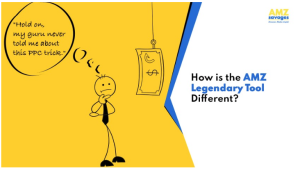
“Hold on, my guru never told me about this PPC trick.”
“Wait, that Facebook ad didn’t explain that I needed liability insurance.”
“I didn’t know that I’d have to factor in software and marketing into my bottom line.”
“Nobody informed me that Amazon regulated inventory flow and penalized you for not moving units.”
These are common complaints from new sellers that we hear all the time; complaints that should have been addressed way before sourcing. Why? Because these extenuating factors play massive roles in your net profit.
Well, the AMZ Legendary Tool takes into account EVERYTHING! That’s right. We cater our product research to your starting budget and factor in ALL costs that pertain to your business to help you find a profitable product. We make sure start-up expenses, marketing expenses, cost of goods – literally, everything – fits within your budget with a little breathing room in case any unknown costs arise.
Best of all, everything is spelled out for you. The Legendary Tool will give you an ideal price to sell at. It will estimate monthly revenue and even give an estimated profit range based on your assessed spend on sourcing, shipping, launching, storage, and PPC . Most importantly, they don’t pedal the same product to multiple platform users. Each product is customized to marketing trends as well as the category you wish to sell in and the amount of money you want to invest.
At AMZ Savages we even offer a list of trusted service providers to contact for manufacturing, product photography, listing optimizations, PPC services, and more! Then, when you are ready for your launch, we’ll supply you a list of keywords to use for the listing and to include in your first PPC campaigns.
Final Thought
While there are a variety of tools and methods you can use to do sound product research, it’s important to remember that emotions should not be a final factor in what you decide to sell. You can be passionate about women’s multivitamins, but that doesn’t mean it will be a winning product to sell on Amazon. Data-driven metrics have to be part of the decision.
But even if you do allow data to lead the outcome, that doesn’t necessarily negate all of the competitors you may face who followed the exact same market trends. This is why popular software programs may lead you astray with their results.
Furthermore, it’s not enough to find a potentially high-grossing product; you have to confirm that you’ll turn profit by factoring in every potential cost you may inherit in the process. The Amz Legendary tool is a trusted software tool that not only takes into account your budget and the cost of sourcing and Amazon services – it also provides a quality product that is unique to your budget and needs.
